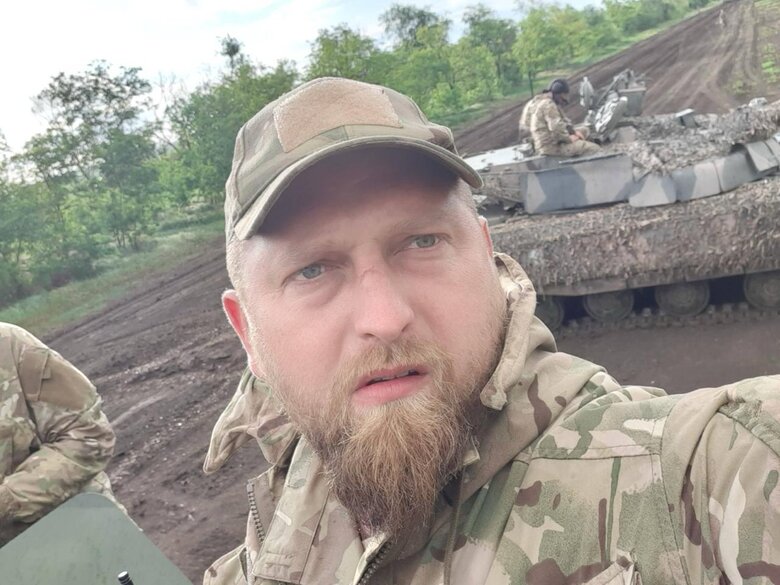Heroes of Heroic City. On second anniversary of battle of Mariupol
March 2022. Bleeding battles are taking place in Mariupol. The Russian army is destroying the city in front of the whole world. The heroic defense lasted 86 days. Completely surrounded, the Mariupol garrison held back the Russian army, which spared no resources, weapons, or cannon fodder. In this article, we will partially recreate the chronology of events and remember the people whose feat shocked the world and saved thousands of lives, preventing the Russians from setting up Mariupol in other cities of Ukraine.

The first explosions occurred in the city at 02:00 a.m. on February 24. Starting the next day, the fighting continued in all directions.
Numerous Russian units attacked the city: 810th Marine Brigade, 19th Motorized Rifle Division, 177th Marine Regiment, 22nd Special Forces Brigade, 7th Air Assault Division, Somali and Akhmat battalions, units of the so-called "DPR" and others. According to rough estimates, up to 22,000 Russians attacked the city. The occupiers launched their entire arsenal at Mariupol: naval artillery, aircraft, tanks, and MLRS
At the same time, the size of the Mariupol garrison was approximately 5,700 defenders with very limited weapons and ammunition. For example, there was only one Ukrainian tank for 20 enemy tanks. The ratio of artillery to aviation is out of the question. Later, the 'Azov' militants calculated that the Russian leadership spent at least $1.1 billion on the bombing and occupation of Mariupol in the first weeks of the full-scale war alone.
Under such extremely difficult conditions, the Azov regiment under the command of Denys Prokopenko (Redis) took over the organization of the city's defense. The city was also defended by the 36th Marine Brigade, border guards, units of the National Guard, the Armed Forces of Ukraine, the territorial defense, and the National Police.

"We had an order to defend Mariupol. There was no order to take full command of the defense of Mariupol, but we made this decision because no one else was able to do it," said Illia Samoilenko, an officer in the Azov Intelligence Department.
Due to the inadequate organization of the defense of Kherson, Melitopol, and Berdiansk, Mariupol was under a complete blockade on March 1. The eastern group of the Russian Federation, together with separatists, broke through the line between Volnovakha and Mariupol. The southern group advanced from the occupied Crimea. On March 3, the Russians controlled all roads leading to Mariupol.
"Mariupol's defenders are fighting one-on-one with superior enemy forces. But damn it, they are showing such endurance and heroism that Ukraine should know what it means to be devoted to the Motherland," said Sviatoslav Palamar (Kalyna), deputy commander of Azov, in one of his many addresses.

Surrounded by the enemy, the ability to conduct combat operations depended entirely on logistics. Ivan Ihnatiev ("Ihnat"), Azov's deputy commander for logistics, was in charge of providing the garrison with everything it needed for defense.
Ivan Ihnatiev (Ihnat). Photo: Azov
Since the beginning of the blockade, the presence of civilians in the city has significantly immobilized and complicated the work of the defenders. At first, residents did not want to evacuate, believing that the bombing would not last long. A few days later, they simply did not have the opportunity to do so, as all exits from the city were blocked by the Russians.
Defenders are handing out humanitarian aid to Mariupol residents. Video: "Azov"
According to estimates by human rights organizations, as of early March 2022, about 450,000 residents still stayed in Mariupol. From March 1 to March 13, almost no one managed to leave - the Russian occupiers announced a "green corridor" and then fired at the evacuation convoys.
The military themselves had to evacuate people from the most dangerous areas of the city. More than 80 civilians who were hiding from Russian bombs in the basement of a school in the Volonterovka neighborhood were taken out by a soldier of the 36th Brigade, Valentyna Strutynska. The safest place at the time seemed to be a shelter set up in the Mariupol Drama Theater.
"I hope that they managed to leave before that fateful day in the direction of Zaporizhzhia. I really hope that some of them survived," the female soldier recalls.

With shelling and air strikes on the drama theater, maternity hospital, hospitals, and residential high-rises, Russia turned Mariupol into a place of continuous war crime. The Russian military killed families, riser blocks of flats, and entire neighborhoods. Adults and children died under the rubble and in lines for drinking water. They died of injuries, hunger, and lack of medical care - the Russian military did everything to prevent the delivery of medicine and food to people.
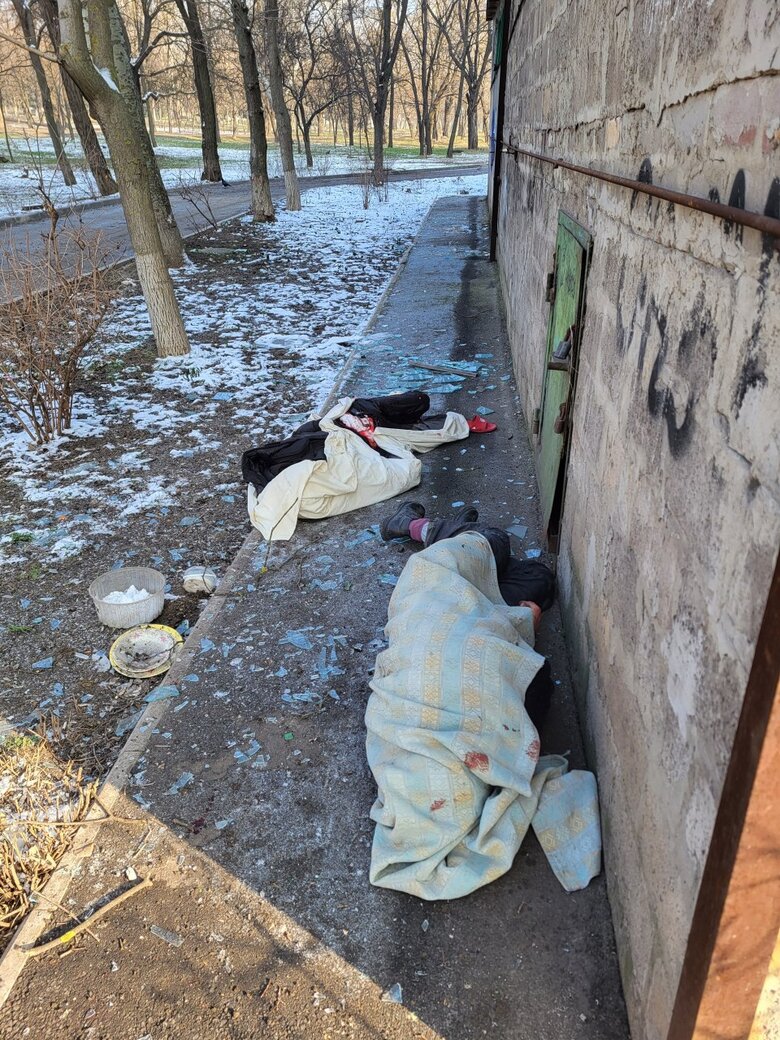
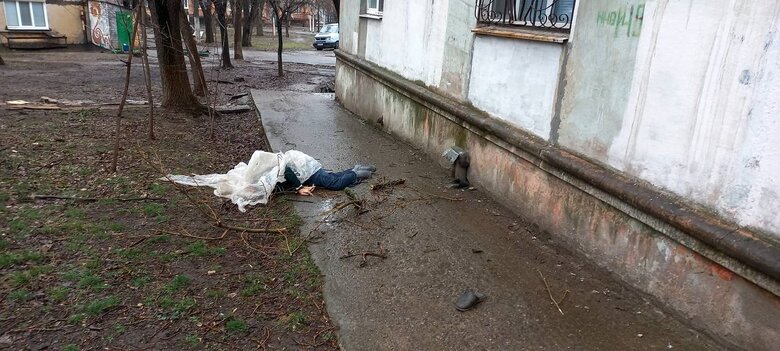
No one is willing to give an approximate number of civilians killed in Mariupol. The count goes to tens of thousands of victims. On March 9, Azov's telegram channel published photos of the first of numerous mass graves.
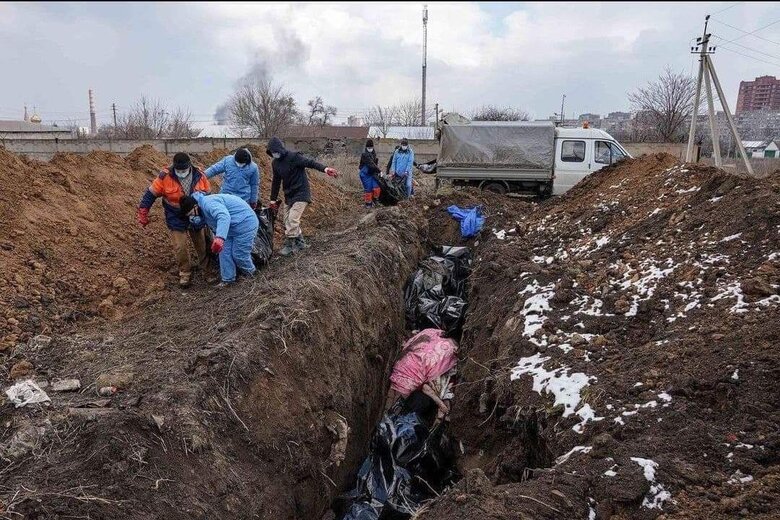
"We were in a state where you stop fighting for existence. Our friend, death hypnotized us. She became the most desirable thing in this Mariupol life," is how Mariupol journalist Nadiia Sukhorukova described survival under Russian bombs.
The Russian army is firing on residential buildings. Video: "Azov"
Hopes for the de-blockade of Mariupol did not materialize. There were battles for Kyiv, Kharkiv, Chernihiv, Sumy, and the occupiers advanced to Zaporizhzhia. Azov's attempts to break through the encirclement on their own were unsuccessful. Redis gave the order to hold the line to the last drop of blood: "The enemy has brought huge forces to this area. The longer we stay here, the easier it will be for our capital and the whole of Ukraine to breathe."
Along with bloody battles and assistance to civilians, Azov's command managed its units in the government-controlled territory of Ukraine and set up a recruiting center in Zaporizhzhia. One of its tasks was to continue the struggle and fighting traditions, as Azov simply could not end its existence in Mariupol. The regiment's command never considered the option of withdrawing from the encirclement.
"If we had managed to break out of Mariupol, the entire group - 20 to 25 thousand Russian servicemen - would have gone either in the direction of Zaporizhzhia or Dnipro. So there was no question of withdrawal," says Bohdan Krotevych (Tavr), Azov's Chief of Staff.

40 days of defense of Mariupol. Video: "Azov
Starting from March 18, the city's defense was commanded from Azovstal Iron and Steel Works. It, as well as the Ilyich Iron and Steel Works and the Azovmash concern, were considered defensive points in advance.
"Everyone was sure that the defense would take place along the eastern borders in the east (the borders of the Joint Forces Operation zone - ed.). No one could have imagined that a week after the start of the full-scale operation, we would have to defend the city from the western outskirts," admits Dmytro Andriushchenko, an officer of Azov's management.
In the end, marines, border guards, police and other units involved in the defense of the city withdrew to Azovstal. Thousands of civilians, including children, took refuge there.
4-year-old Alisa from Azovstal. Video: "Azovstal
"The bunker was like a capsule. When it flew near us, the bunker swayed from left to right or from bottom to top. When there were strong hits, our commander turned on Ukrainian songs, played the national anthem of Ukraine. He distracted us," recalls border guard Alina, who was serving in the port of Mariupol at the time of the full-scale invasion.
From April 25, Azovstal's defenders held a circular defense. On May 3, the enemy launched an assault. Since then, bloody battles have continued inside the plant. Shortly before that, the reinforced concrete ceilings of the bunker where the hospital and operating room were located had collapsed due to constant air strikes. There were days when the Russian army dropped more than 150 bombs on Mariupol. The Russians attacked the Azovstal fortress with strategic aviation every night at 02:00 a.m. and at 04:00 a.m.
"Every night we woke up, put on our armor and helmets and waited. Before that, the bombers had destroyed three basements. There were 60 people in one of them. You sit there and wait to be fallen," recalls David Kasatkin (Chemist), a lieutenant with the 2nd Azov Battalion.
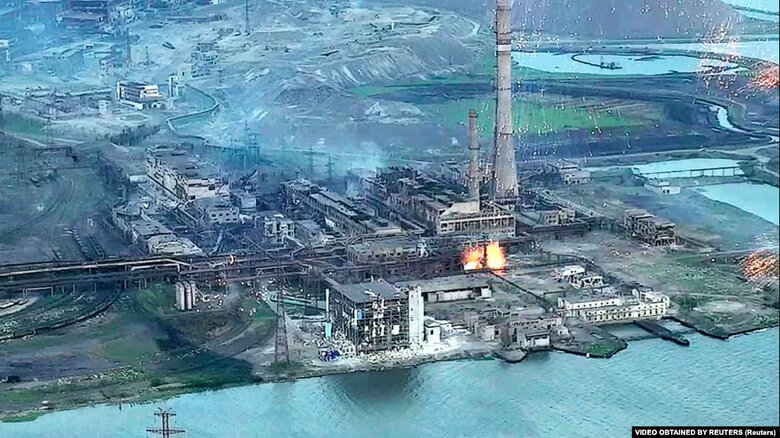
Food, water and medical supplies were rapidly running out. One of the first illustrations of the catastrophic situation at Azovstal was a photo posted by patrol policeman Daniil Safonov on April 19, 2022. It shows a piece of baked flatbread with a comment: "This is the most delicious thing I've eaten in the last week." On May 2, Danylo died. He was awarded the title of Hero of Ukraine (posthumously).


Women and children in Azovstal's bomb shelters
By the end of April, the number of injured people at Azovstal reached 400. Many of them had amputations and needed highly qualified medical care. By that time, doctors had already run out of antibiotics and anti-inflammatory drugs. There was not even food and water for the wounded.
"I personally lost 20 kg. There are soldiers who have lost about 25 kg, and they are still defending the plant. We hardly eat - there is nothing to eat. And what we do eat is scarce. The lack of drinking water increases the severity of the situation," Azov paramedic Asan Isenadzhiev (Hasan) wrote in his diary.


Helicopters were the only connection to the "big land" and the only way to get ammunition, food, and medicine for the defenders of Mariupol. Starting on March 21, 2022, Ukrainian Mi-8s managed to make seven suicide missions through dense air defense and enemy aircraft. Most missions were successful, but it was objectively impossible to meet the needs of the Mariupol garrison. Nevertheless, despite the lack of weapons and a disproportionate number of personnel, the city's defenders inflicted significant losses on the enemy every day.
During the battle for Mariupol in February-May 2022, about 6,000 Russian military personnel were killed, according to confirmed reports. Among them are Major Generals Volodymyr Frolov and Andriy Sukhovetsky, Deputy Commander of the Russian Black Sea Fleet, traitor Andriy Paliy, unit commanders, and officers. Hundreds of enemy vehicles were destroyed. The elite Russian units, including the 126th and 810th brigades, which have been involved in the aggression against Ukraine since 2014, suffered huge losses.
"This is a city made of steel that protected the whole of Ukraine from the war for eight years. It raised us, the steel warriors who turn Moscow's hordes into fertilizer for the Azov Sea. We are holding not just a city, but a true symbol of Ukraine's freedom and rebelliousness around the world," Redis said.
Fighting in the city centre. April 2022. Video: "Azov"
The whole world fought together with Ukraine to rescue the Mariupol defenders blocked at Azovstal. German Chancellor Olaf Scholz and French President Emmanuel Macron called on Russia to release the Azovs. The Pope also asked for a safe corridor. Turkish President Recep Tayyip Erdogan expressed his readiness to take the military and civilians across the Black Sea. All appeals were ignored.
Only on May 16, on the instructions of the Supreme Commander-in-Chief and thanks to the efforts of Ukraine, the UN and the Red Cross, an operation to rescue the blocked defenders was launched. They fulfilled the order.
About 2,500 soldiers left the territory of Azovstal. 53 seriously wounded were hospitalized in a hospital in occupied Novoazovsk in the Donetsk region. Another 211 defenders were taken to a penal colony in Olenivka through the humanitarian corridor. According to the agreements with Russia, they were to be exchanged and returned to the territory controlled by Ukraine. Instead, on the night of July 28-29, 2022, the Russian Federation committed a terrorist attack, killing at least 52 prisoners of war.
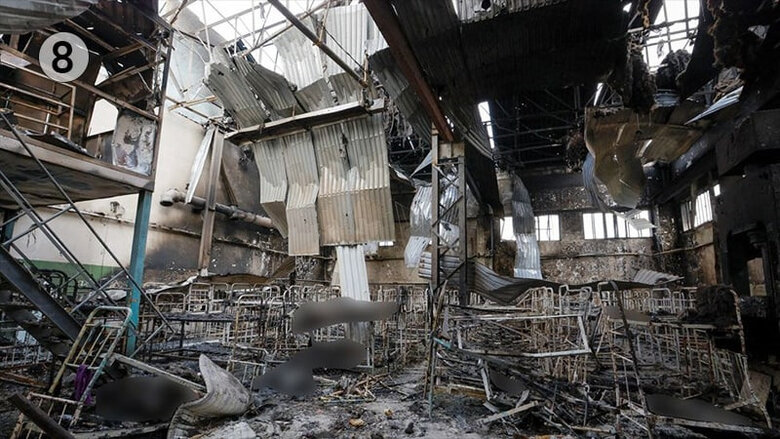
On July 8, 2023, Azov commanders were returned to Ukraine from Turkey.

So far, 51 prisoners have been exchanged. On 8 February 2024, one hundred soldiers returned home, 84 of them defending Mariupol.

More than a thousand Mariupol defenders are still in Russian captivity, and there is no information about their condition. Russia denies access to them to international human rights organizations.
"Today, almost 2,000 defenders are in captivity, including representatives of different units. Also, almost 700 Azov soldiers still remain in the enemy's torture chambers," said Natalia Kravtsova, mother of a prisoner of war.
For the sake of their release, relatives of the prisoners and concerned Ukrainians are organizing #FreeAzov actions under the slogan: "Fight for them as they fought for us."
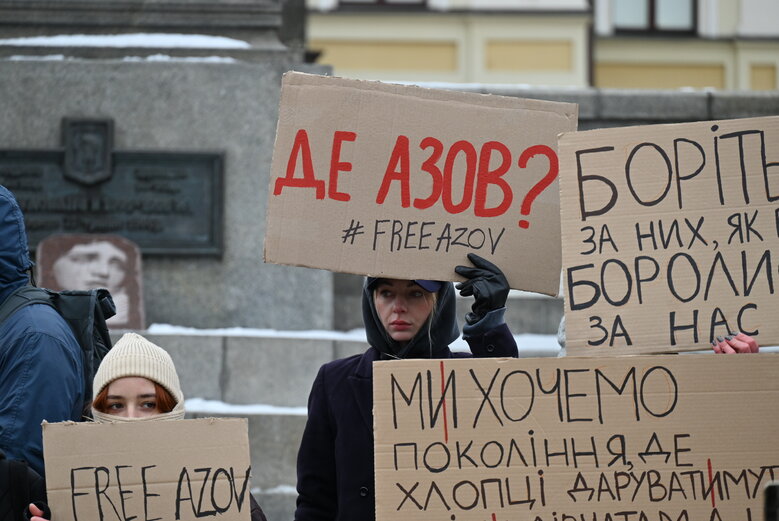
The heroic defense of Mariupol was of great importance for the further development of the war. "The 'Azov' soldiers, marines, and other units of the Defense Forces pulled back one of the main striking fists of the Russian army. The enemy's plans to quickly reach the administrative borders of the Donetsk region, capture Zaporizhzhia, and cut a "land corridor" to Transnistria have not yet been realized.
"We have done everything possible and impossible to draw back the enemy's superior forces. We consciously went into this cauldron," Redis said.
The defenders of Mariupol took the fire to gain time to receive Western weapons, organize Ukraine's defense and stabilize the front. They did so consciously, soberly estimating the modest chances of staying alive
Maryna Kryvenko, for Censor. NET

